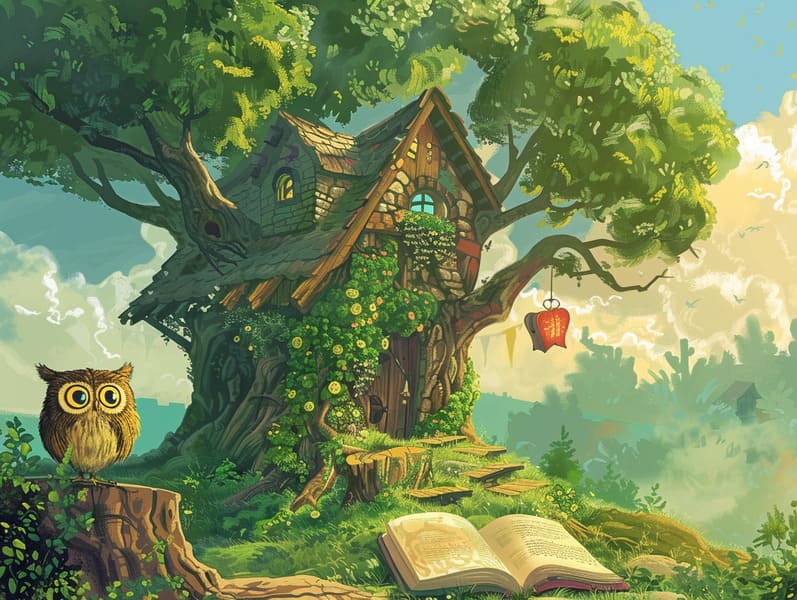
Best fairy tales have timeless appeal. These narratives have been shared from one generation to the next well before they were ever inscribed. They were born from a variety of traditions, including Asian traditions. They were initially told among adults, often carrying themes and messages pertaining to the societal norms and beliefs of the time.
The Grimm brothers, Jacob and Wilhelm, were among the first to collect many of these beloved stories. Their volume, "Grimm's Fairy Stories," included stories like "The True Bride," "Little Brother and Little Sister," and "The True Story of Snow White," which have since become staples in the world of iconic fairy tales. Similarly, Hans Christian Andersen's charming stories, such as "The Little Mermaid," and "The Ugly Duckling," have gained the love worldwide, guaranteeing their place in the pantheon of beloved fairy tales.
Despite their ancient origins, traditional fairy tales remain as important as ever, especially as bedtime stories for kids. These charming stories are now available in numerous formats, including vividly illustrated books, charming animations, and online fairy tales.
Their ongoing significance can be linked to several enchanting factors:
Vital Lessons: Ancient fairy tales often share important moral lessons. Stories like "The Story of the Boy Who Cried Wolf" teach the benefit of truthfulness, while "The Tortoise and the Hare" demonstrate the virtues of persistence and unpretentiousness. These stories offer young ones clear distinctions between good and bad, molding their moral compass in a soft yet significant way.
Compassion and Insight: Timeless fairy tales frequently portray figures facing tests and troubles, provoking young readers to relate with their struggles and rally behind their triumphs. For instance, "Beauty and the Beast" shows us the benefit of seeing beyond the surface to see the real character of a individual, promoting warmth and comprehension.
Cultural Awareness: Many classic fairy tales are interwoven with the cultural contexts from which they grew. Immersing in these fairy tales can provide fascinating glimpses into different beliefs, cultivating a sense of world insight and appreciation.
Inventiveness and Fantasy: The fantastical elements in traditional fairy tales—talking beasts—generate children’s fantastical thinking. These narratives move readers to extraordinary realms, enlivening creative dreams and a sense of wonder that stays a lifetime.
Classic fairy tales are not only captivating but also pedagogical. They function as enchanted tools in promoting various thinking and feeling skills in little ones. When timeless fairy tales are spoken, they nurture linguistic abilities by offering new lexicon and detailed sentence structures. This practice also improves auditory skills and focus, as children listen intently, prepared to see what happens next.
Furthermore, talking about the themes and characters of classic fairy tales can improve analytical skills and thinking skills. Kids are guided to spot patterns, make predictions, and figure out cause and effect. These reflections also benefit young ones utter their thoughts and feelings, enhancing their emotional intelligence.
In today’s modern era, the availability of web-based fairy tales has made these narratives more within reach than ever. Digital sites and mobile apps present broad selections of bedtime fairy tales that can be explored or listened through anytime, anywhere. Fairy tales told out loud are particularly popular, providing an fascinating method for children to delight in these delightful tales. Voice books and read-to-me stories take characters and settings to life, often complemented by fantastical audio effects and instrumentals that raise the storytelling experience.
The timeless fascination of classic fairy tales lies in their ability to adapt to today's society while keeping their central messages. Contemporary reimaginings of these stories often integrate more representative figures and modern settings, making them familiar to today’s audience. However, the main ideas of guts, humanity, and fair play remain unchanged, continuing to resonate with young readers of all ages.
Timeless fairy tales also offer a sense of ease and recognition. They highlight a ordered narrative with a definite beginning, middle, and end, often concluding with the settlement of conflicts and the triumph of goodness over badness. This uniformity can be solacing for kids, proffering a sense of unwaveringness in an inconstant world.
Classic fairy tales continue to entrance and enlighten new generations, maintaining their enchantment and importance in modern society. As children's night stories, they afford a perfect blend of captivation and insight, enhancing moral values, empathy, and creativity. The prevalence of online storybooks and the prevalence of fairy tales told out loud ensure that these old stories remain within reach to new generations.
By preserving and broadcasting these fairy tales, we continue to commemorate the rich tapestry of cultural legacy and cultural heritage. Whether you are viewing a richly illustrated book, viewing a electronic library, or playing an spoken story, the grandeur of traditional fairy tales is always within reach. These stories point out of the continued strength of tales and its ability to join us across time and space.
Even if you are exploring a gorgeously illustrated book, discovering a cyber library, or listening to more info an read-aloud story, the mystique of ancient fairy tales is always within reach.
These fairy tales point out of the perpetual impact of narratives and its ability to unite us across eras and regions, weaving a spell that charms and informs alike.
Comments on “A Brief History of Timeless Fairy Tales and Their Unchanging Delight.”